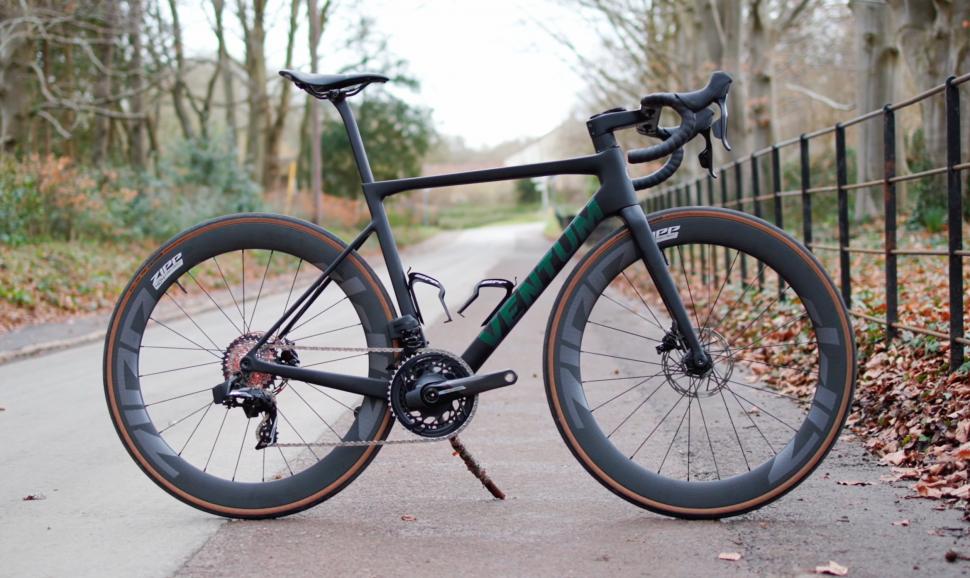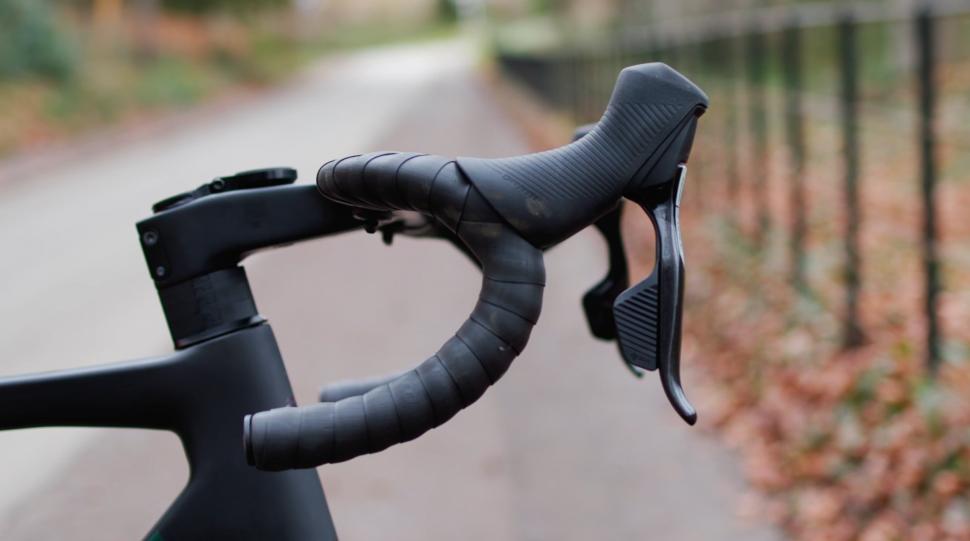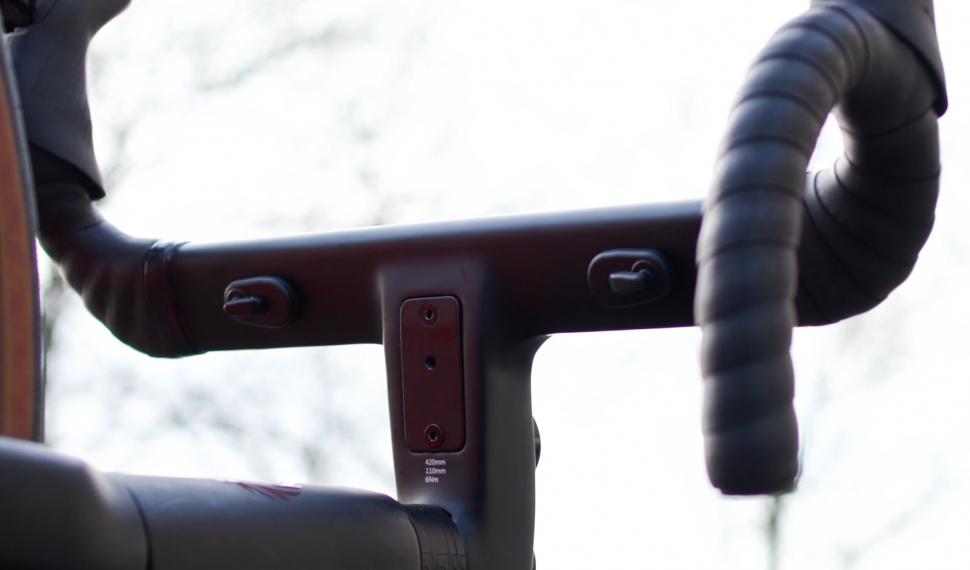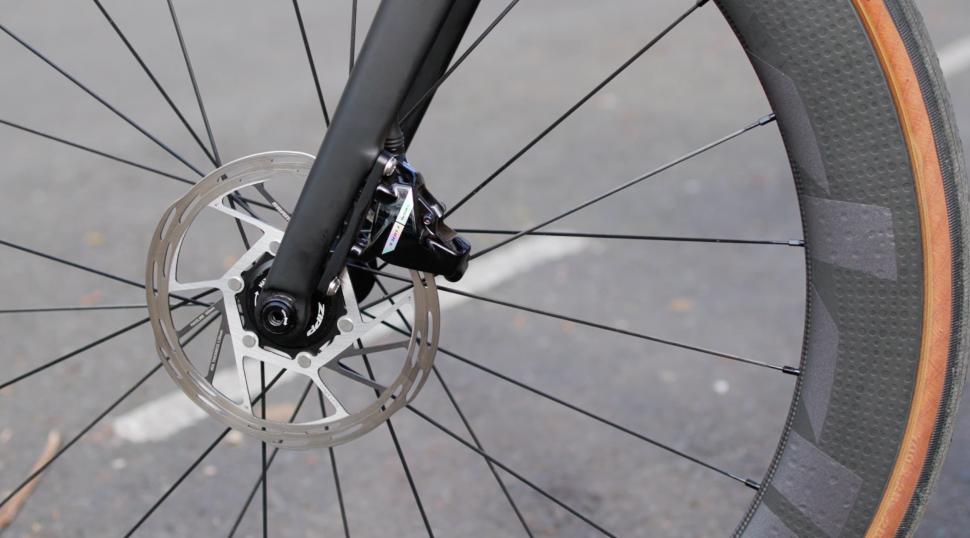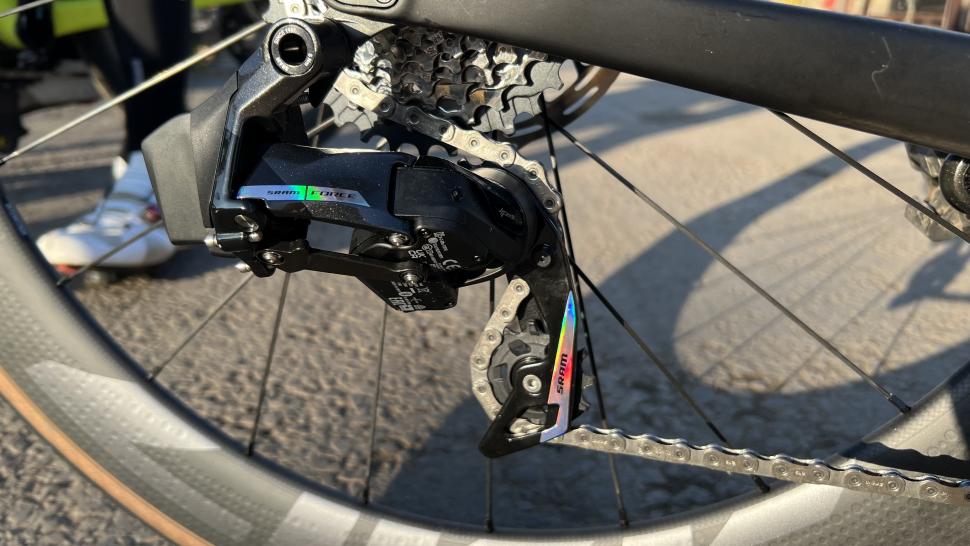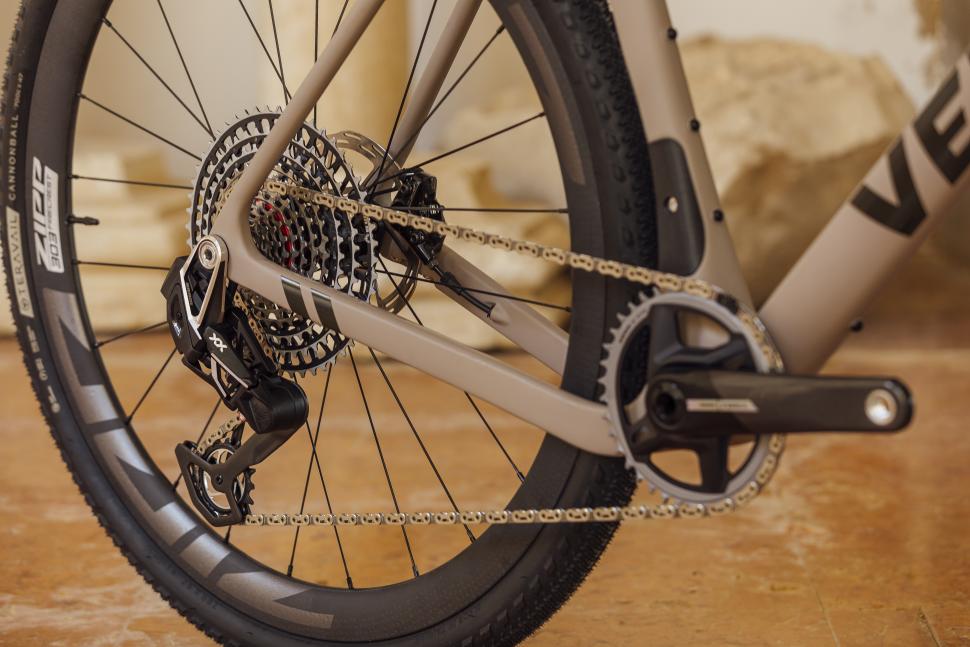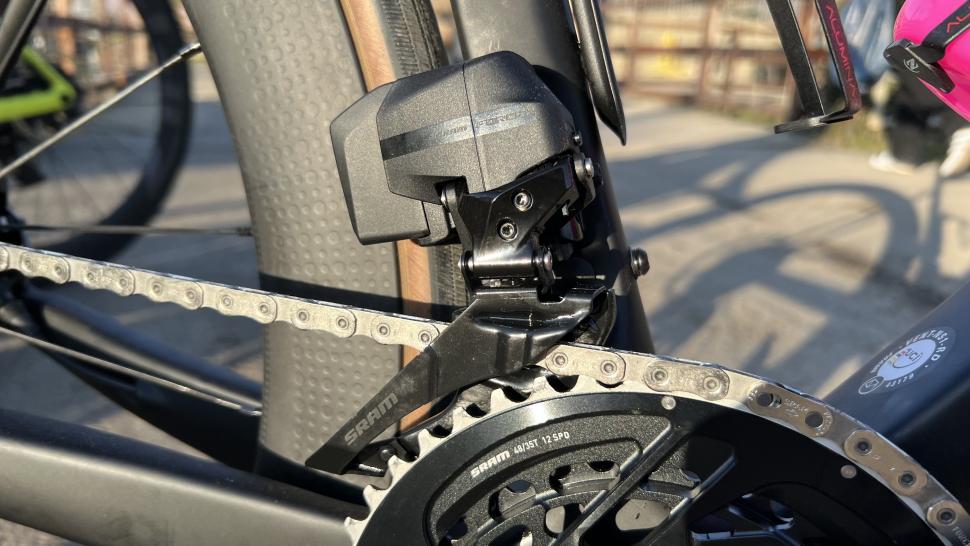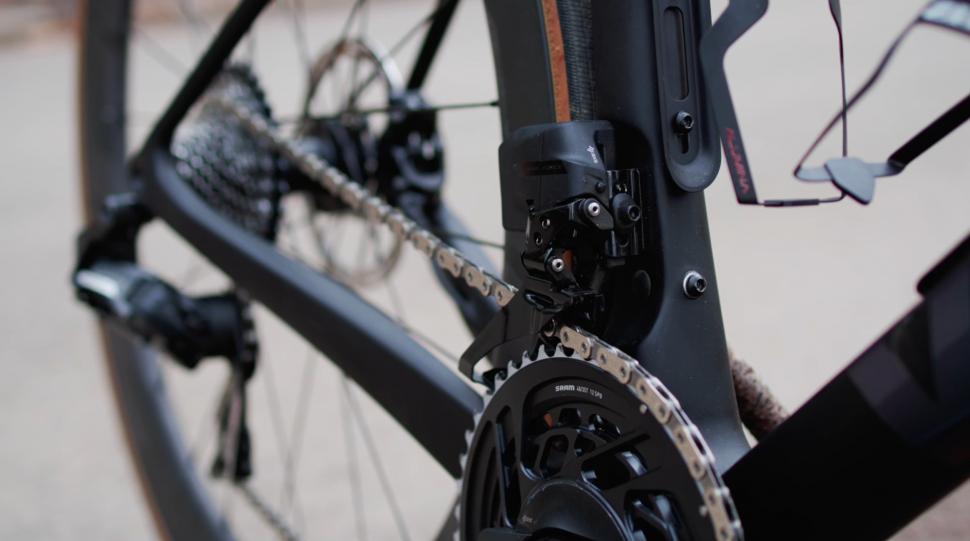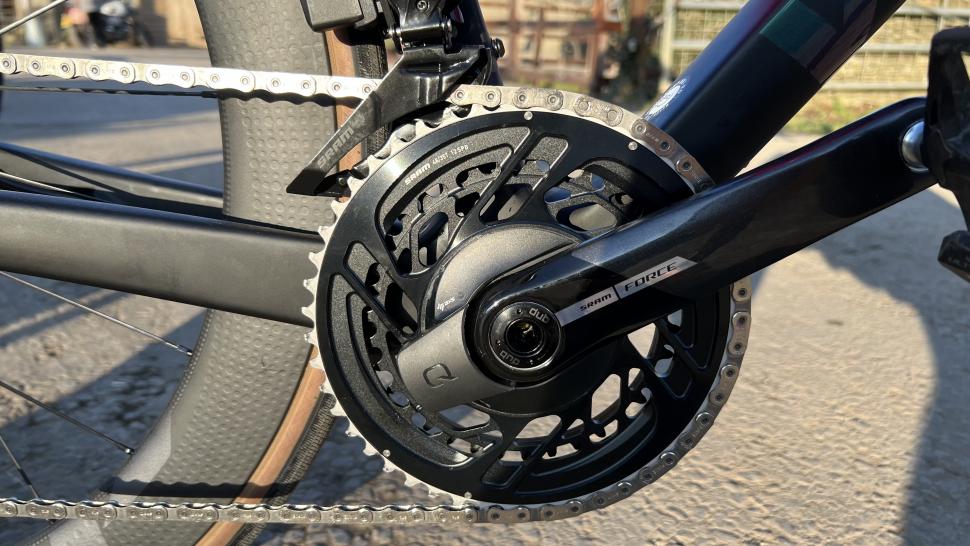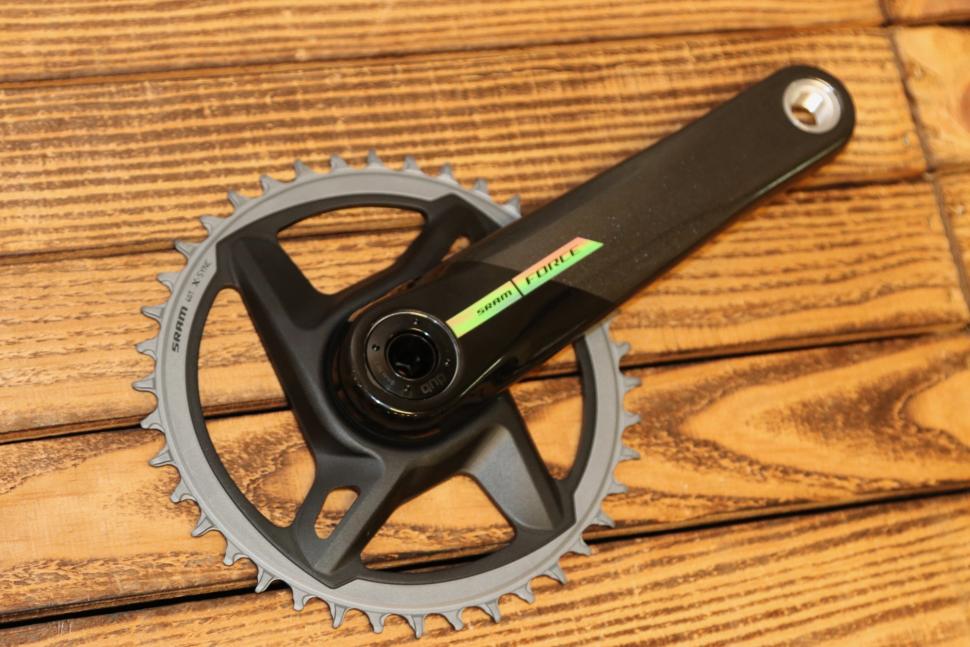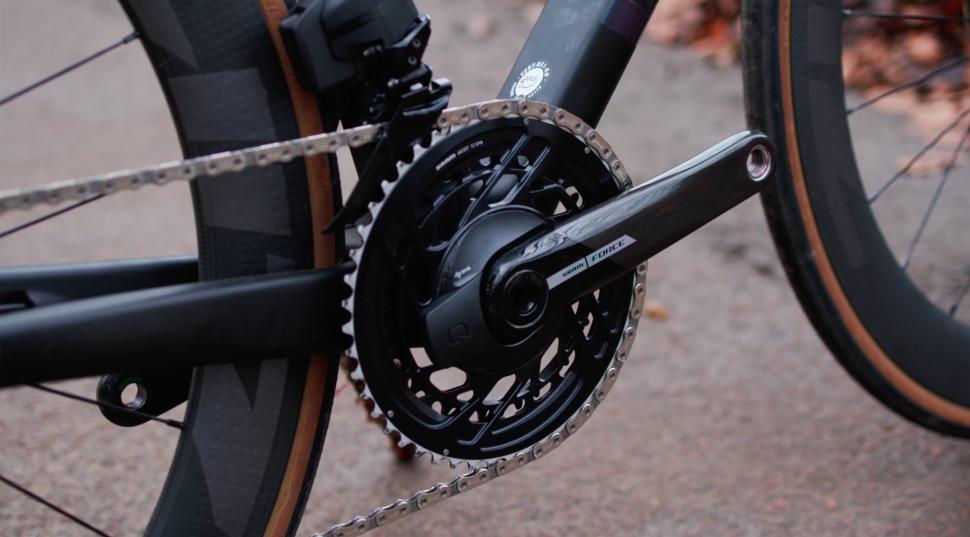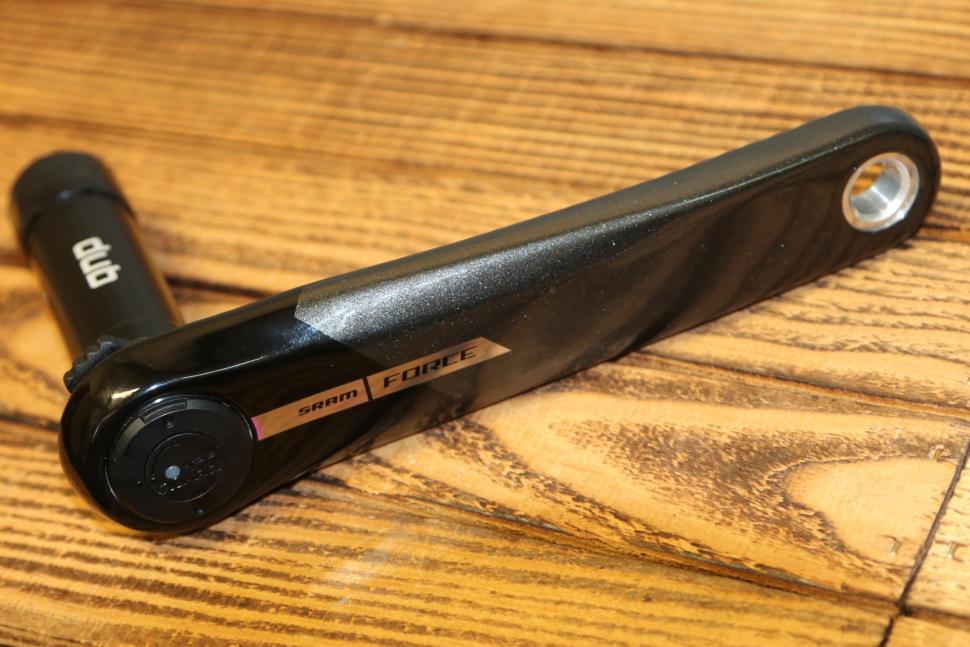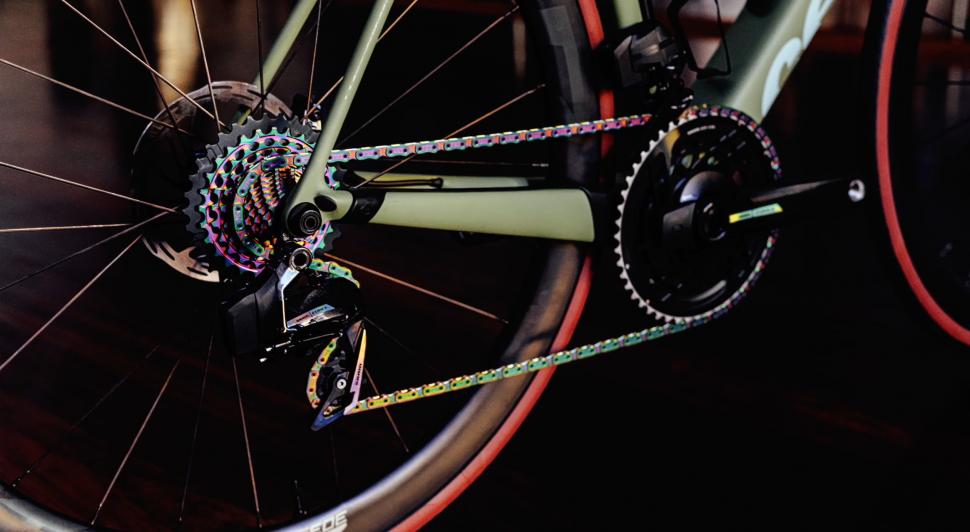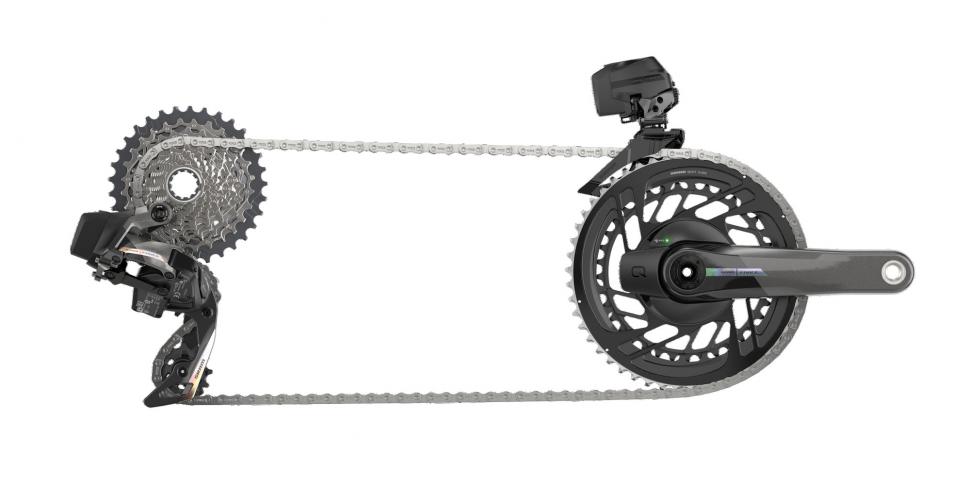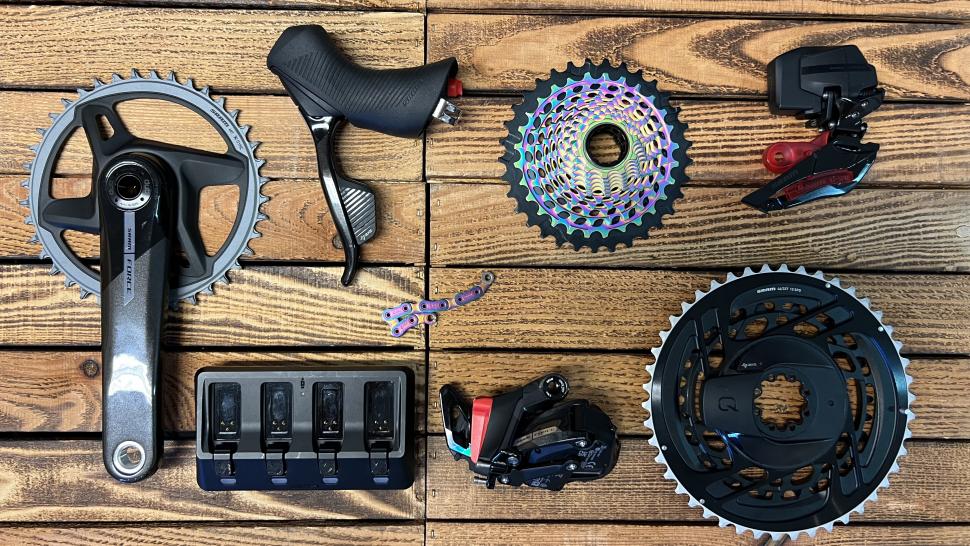After many rumours and spy shots, SRAM has finally released its latest Force AXS groupset. This remains the American brand’s second-tier groupset, and we’ve had the chance to put in some miles with it ahead of the launch. Here are our initial impressions, but first, let’s take a look at what’s changed…
> New SRAM Force AXS: read the full launch story with all the tech details here
The main changes
- First up is that the eTap bit of the name has gone missing. Fear not though, this is still an electronic and wireless groupset just like the previous generation and is once again available in 1x and 2x configurations.
- Arguably the biggest difference is up top at the shifters. They feature much smaller hoods which have been lifted from the latest Rival groupset. The shifter paddles are also a bit bigger with added texture.
- The groupset has shaved off around 100g compared to the outgoing version.
- The front mech has a new cage shape which is now also black.
- The chainrings are now an integrated affair just like on Red AXS.
- This isn’t a change but it is still worth pointing out: the new Force mercifully costs the same as the outgoing version. If you saw our recent video and feature on price rises vs inflation then you’ll know that this bucks the trend.
- Oh, and it looks loads better! The carbon crank arms and rear mech now feature a “unicorn grey” colour scheme and laser foil detailing. I personally think it looks a lot less bland than the old Force, but let us know your opinion in the comments section below of course.
Why the update?
> Staff Bikes: Jamie’s customised Lauf Seigla with SRAM Rival AXS and 57mm of clearance
So, why has Force received the updates it has? Well, according to SRAM it was on the whole very happy with the 12-speed shifting performance of the outgoing version, but the aesthetic gap to the range-topping Red was too big.
This is definitely a point that I agree with. Whereas Ultegra, Shimano’s second-tier groupset, looks very similar to Dura-Ace, the outgoing SRAM Force was just a bit…well, bland. And that’s exactly why for my gravel bike up until now I’ve chosen to use a Rival groupset instead.
A closer look
Some people might say that SRAM has played it safe with what really are only minor updates to a groupset that was released thre years ago; but, let’s be honest, the old version was a stonking groupset. We gave the wide version a 9/10 review in fact. The updates that have been made only add to the groupset’s appeal in my opinion.
> Review: 2019 SRAM Force AXS Wide Groupset
Aesthetics is very subjective, but no one who has seen the newer version seems to prefer the old one for looks. The increase in black componentry and oil-slick graphics look premium enough for a dream build without being so bling that they detract or clash with some frames.
Shifters
> Review: SRAM Rival AXS Groupset
Then there are the shifters. I’ve been using Rival AXS since it was released, and it’s a hood shape that I find works much better for me than the older bulky style found on SRAM groupsets of old, namely Red AXS and the old Force AXS.
Again, I think that it looks better. Some will argue that off-road, the older style tall hoods stopped your hands from jumping forwards; but to be honest, if your hands are doing that then you either need to be on a mountain bike, in the drops or just holding on a bit tighter. They gave me thumb blisters anyway, not something that I’ve got with this later version.
This updated design still provides plenty of purchase and opens up a few more hand positions. On ultra-endurance rides we’ll take as much variety as possible!
> How to make your bike more comfortable – check out our 14 tips
So, how can SRAM just magic away half the hood? Well, removing the pad contact point of adjustment has freed up a fair bit of space. As a cycling tech journalist I did personally use this, but completely agree with SRAM that the average consumer probaably won’t touch it. It’s something that I’m not going to lose sleep over anyway, because the brakes still offer superb modulation and predictable power and the redesigned shifter is, in my opinion, well worth it.
Riders with smaller hands will likely prefer the redesigned shifters even more than I do. It’s much easier to wrap your hands around the shifter body which helps you feel as secure as possible, which is going to be particularly useful on the 1x version which is more likely to be used offroad. Up until now we’ve only had a chance to try out the road version, but I’m sure it won’t be long before we get to try it on gravel.
> Gravel bikes — do we actually need them?
You may have also noticed that on my test bike, there are little buttons under the bar that look new… and they are! These are new wireless climbing blips, but you could just as easily attach them to the drops to use them as sprint shifters. Ours are attached with a bit of 3M double-sided tape which makes placement and removal a breeze.
The old Red groupset used wired blips, so it’s nice to see SRAM ditching even more wires because this really does make bikes super easy to build and service. This has added benefit if you wanted to fit the groupset to a TT bike, for example.
Braking
> Hitting 100kph on a bike — what does it take to break this elusive cycling speed barrier?
We’ve kind of glanced over the callipers, and that’s because nothing has changed. The callipers do use bleeding edge technology, which I mention only because it’s something that the Rival callipers are missing. For those of you who don’t know, bleeding edge is a superb method of bleeding your brakes, a.k.a getting air out of the system, but it does require a special kit.
Rest assured that the brakes still provide plenty of power, modulation and feel, and I’ve never found SRAM brakes to have any clearance issues like the Shimano brakes of old, where they would rub a lot after prolonged braking.
Rear Derailleur
> Your complete guide to Shimano road bike groupsets 2023 — Everything you need to know
Moving down to the back of the bike, because we haven’t looked at this rear mech much yet. It too looks very similar to the outgoing Force AXS if you ignore the new flashy graphics, and you’d be exactly right.
SRAM has taken the launch as an opportunity to streamline its naming and range, so there are now just two rear mechs: the road version which is suitable for the 10-28T, 10-30T, 10-33T and 10-36T cassettes, while the Force XPLR AXS rear derailleur is 1x specific and works with 10-36T and 10-44T cassettes.
Basically, use the smaller range one on your road bike and it’ll offer more than enough gears, and stick the XPLR version on your gravel/touring bike for even more range. If however, you’re after even more gearing spread than that then SRAM still allows a mullet setup where you can pair the shifters to one of their Eagle mountain bike mechs.
> How to get ultra-low gearing for gravel bike adventures
The rear mech is another area that is slightly different to Rival. Whereas the Rival rear mech uses a spring clutch system the Force, and Red rear mechs for that matter use an Orbit fluid damper to keep the chain under control, just like on the old Force I found this worked well however many potholes I chucked it through, more than what can be said for the seatpost clamp…the real test for this though will be off-road. We’ll set about testing the 1x system as soon as possible.
The cassettes themselves haven’t changed, not since SRAM scrapped trying to paint them black anyway, but stay tuned until the end to see what got launched alongside the Force groupset.
Batteries
The batteries are still exactly the same. SRAM claims to have improved battery life a little via firmware updates and you can now charge them four at a time using the new charging dock (shown below). That’ll set you back £130, but certainly will reduce clutter for multi-bike households and workshops.
> Has aero gone too far? The most excessive cycling tech made to shave milliseconds
Battery life is still inferior to that of Shimano, but then it is much easier to remove the batteries for charging as they are external. The resulting bulkiness of the mechs is unavoidable, but something that we have got more used to.
Front Derailleur
The front mech is also still available in two varieties. The slimmer one is obviously designed for the road, and the body remains an extremely similar shape to the outgoing Force but the cage has not only been painted but also refined. There’s also the wide version which sits further out from the bike to offer greater tyre clearance and is optimised for smaller chainrings, say 43/30.
Front shifting is something that SRAM has said it has worked tirelessly on improving when compared to the outgoing version, and I have to say it is impressive. You can change the front ring under some serious load, not that you should… but it’s nice to know you can if the time ever does arise.
Chainrings
Helping that crisp shifting is these direct mount chainrings with the option of an integrated power meter. This is one of the “upgrades” that I’m less keen about, because it’s an expensive replacement when these wear out. Whereas I tend to be a cheapskate and just replace the large chainring on my setup, you’re forced to change both rings and potentially the power meter as well here. For all the prices of the new components check out our launch article with all the tech specs.
SRAM says that these integrated chainrings are designed to be “extremely hardwearing”; but of course, with any drivetrain components, there’s a limit to how durable they can be when weight needs to be kept down. In my experience, with a clean-ish drivetrain and fresh chains when required you’re looking at replacement rings every 24,000 kilometres or so (On Red AXS anyway) which equates to over two years for most amateur riders.
> Cycling and weight loss — Top tips for pedalling away the pounds the healthy and sustainable way
Even so, I’d suggest that if you do choose to buy direct mount rings and a power meter then you seriously keep on top of your drivetrain cleaning to drastically improve their lifespan.
Chainring sizes are 50/37 (new to Force, previously only available on Red), 48/35, and 46/33 ring combinations for the direct mounts, which is more than enough gears for just about every road rider. If you haven’t tried SRAM’s X range gearing then I urge that you do so before chatting crap about it. I think this is actually one of the rare innovations that suits the average rider better than the pros.
> All the gear? Check out the gearing choices of the pros at the Tour de France
This 48/35 combo offers the same largest gear as a 53/11, but with far more opportunity to spin as the road starts going up.
Many a naysayer will argue that smaller cogs are less efficient, and they’d be right; however, with the X-Range, you can stay in the big ring for longer, especially on rolling terrain like we’ve got here around the city of Bath. It also means that more often than not my chain line has improved as well, which should benefit drivetrain durability.
> Best 1x bikes – is single-chainring simplicity best?
There is also a 2x Wide spindle version, that’s available with 43/30T rings which are non-integrated and then for 1x (shown above) there’s a whole host of rings with everything from 36T to 50T aero rings.
Power
> 12 reasons why you should buy, and use, a power meter
The 1x groupset copies Rival with its Quarq spindle-based power meter option. I’ve been very satisfied with mine on the Rival and it’s a really cost-effective way of adding power measuring capabilities to your pride and joy, and only adds around 40g albeit sacrificing a little accuracy.
The spindle-based power offering (shown below) has a claimed accuracy of +/-3% whereas the direct mount one on our test bike measures +/-1.5%.
I’m undeniably a bit of a Quarq fanboy. In my experience, they are reliable, accurate and provide repeatable and consistent data, something that many brands still manage to slip up on.
The Quarq spider-based power meter fitted to the new Force groupset that I’m riding was up to the same high standards, never skipping a beat and tracking exactly as I would expect compared to my Tacx Neo 2T and Wahoo Kickr V5 turbo trainers.
More shiny stuff!
> Staff Bikes: A rim brake race bike in 2023!?
What have we missed? Well the flattop chain stays the same, so I guess I can tell you about the other cool stuff now! Alongside the Force reveal, SRAM has also unveiled an oil slick flattop chain and cassette that were previously only available to world champions.
These are part of the Red lineup, but don’t expect them to come cheap. The 10-28 and 10-33 cassettes will set you back a whopping £358! Gravel riders, we’ll just have to wait a bit longer for our oil slick fill.
Pricing
The new SRAM Force AXS disc-brake groupset is priced as follows:
The 2x groupset with a power meter that I’ve been riding has an RRP of £2,228, the same as the outgoing version. The 2x WIDE system with a power meter (The 43/30 system without integrated rings comes in at £1,859, 1x with a power meter: £1,803, 2x road with no power meter: £1,751 and 1x no power meter: £1,533. For UK pricing of all the different components see our pricing and tech specs article.
Conclusion
So on the whole my initial impressions of the new SRAM Force are very positive. It shifts at the rear just as crisply and quickly as the outgoing version, it offers excellent gearing choices for a whole host of riders, and the front shifting is improved – albeit only marginally, and in some cases at additional expense to the consumer – and it looks better.
The shifter shape is brilliant out on the road and likely even better off-road or for those with smaller hands. I for one am glad that SRAM has put the hoods on the diet.
The only issue that I can see is that whereas before Rival was too good to need to buy Force, Force is now too good to need to buy Red. Luckily if the rumours are true, then Red will likely get updated this coming summer, around June if previous SRAM releases are anything to go by.
Let us know your thoughts on the new groupset down in the comments section below. Did SRAM include everything that you wanted to see and do you rate the new aesthetic?



